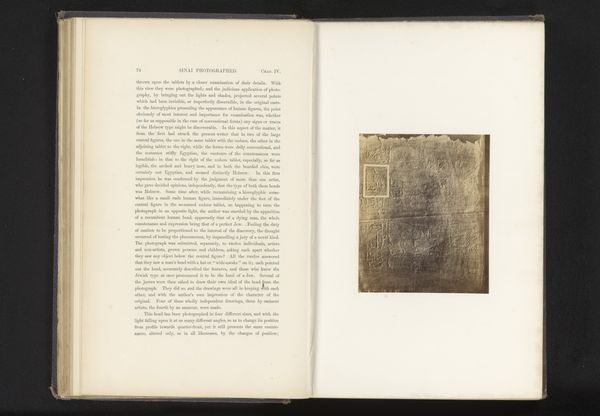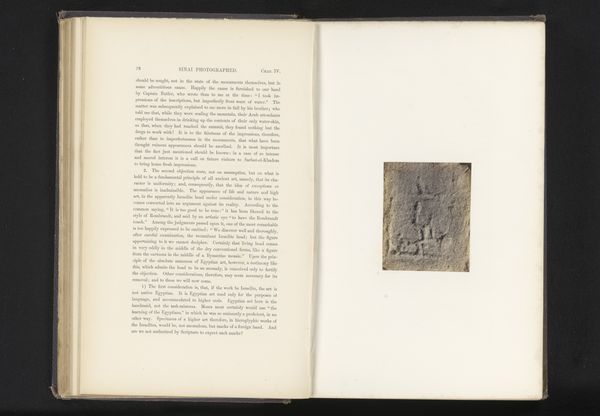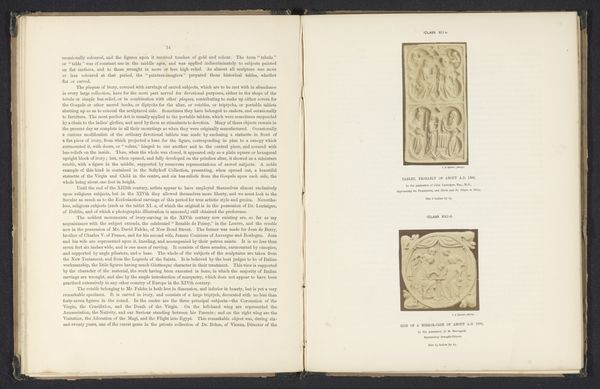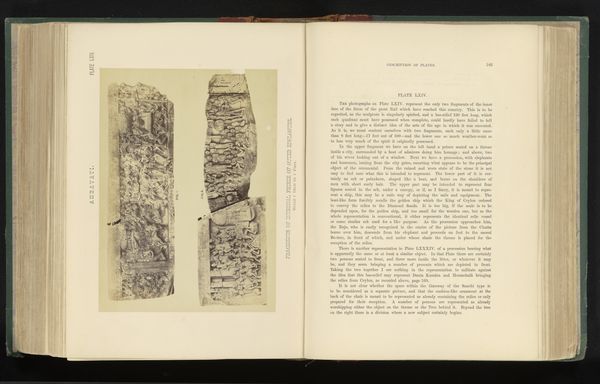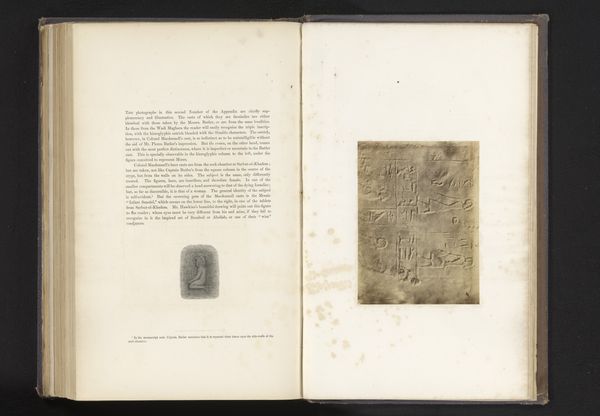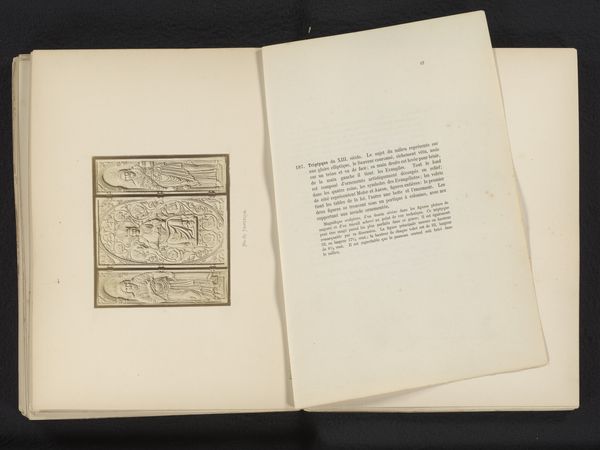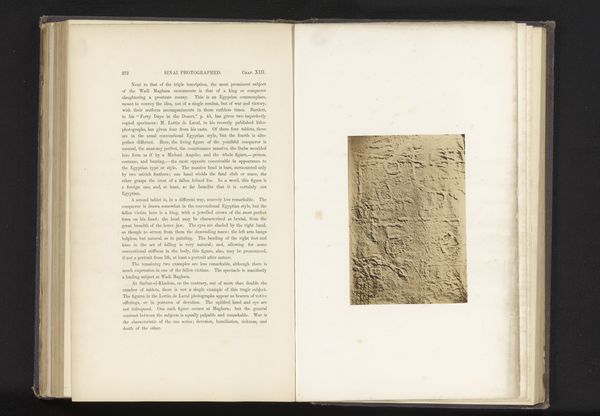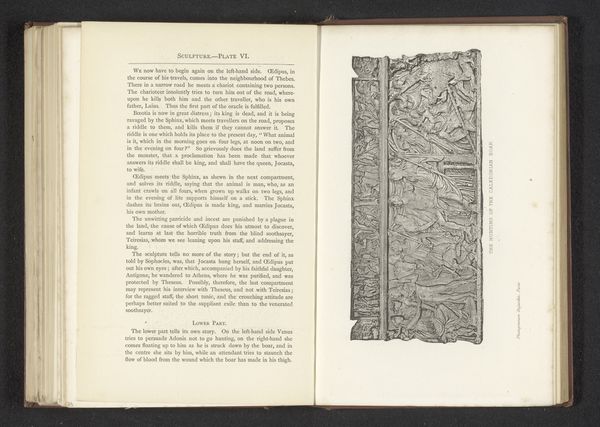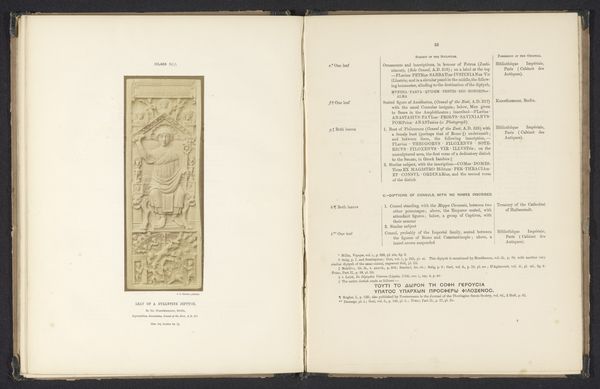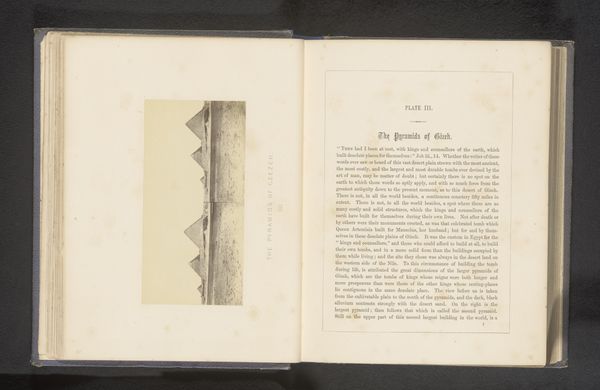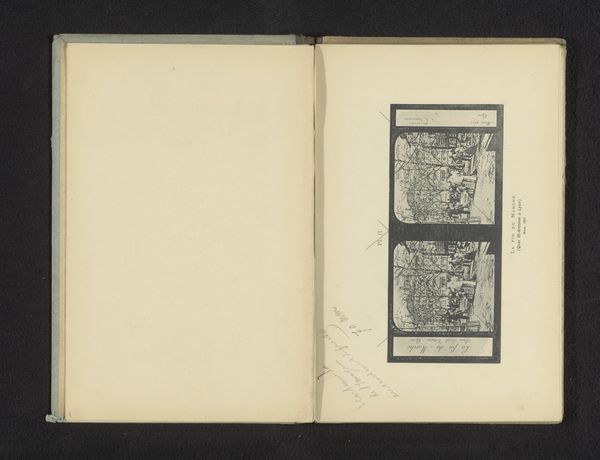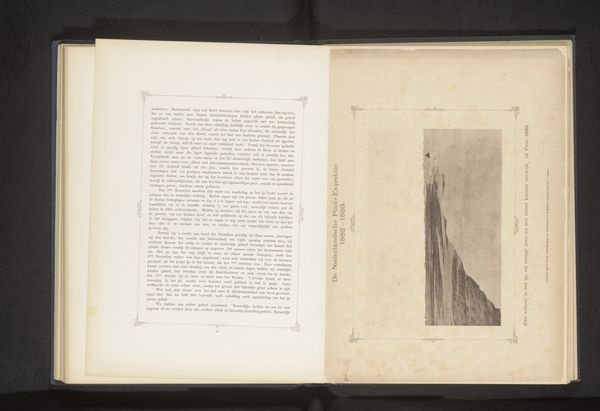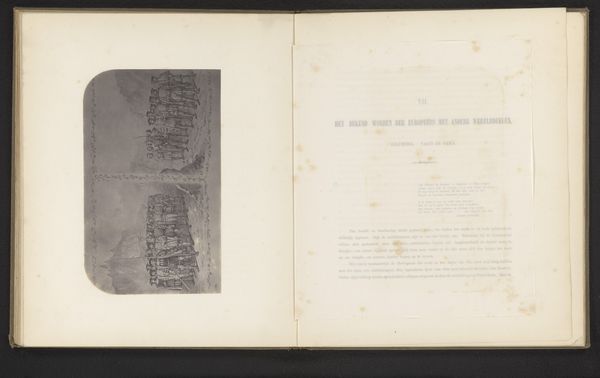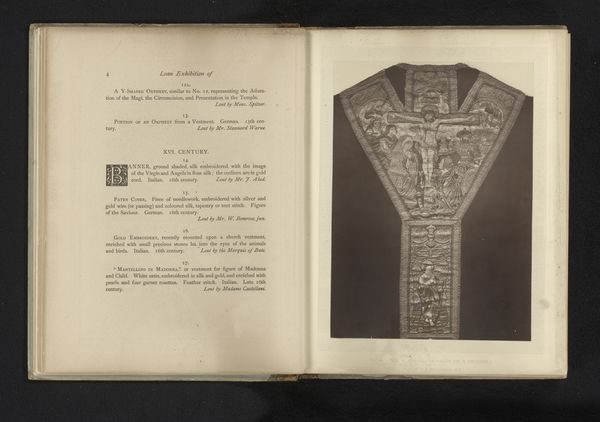
print, textile, photography, collotype
# print
#
textile
#
ancient-egyptian-art
#
photography
#
collotype
#
ancient-mediterranean
Dimensions: height 100 mm, width 255 mm
Copyright: Rijks Museum: Open Domain
Curator: This image displays "Gipsen afgietsels van drie tabletten met hiërogliefen uit Sinaï," translating to "Plaster casts of three tablets with hieroglyphs from Sinai," dating back to before 1862. It appears to be a collotype print within a book, showcasing ancient Egyptian art. Editor: Immediately, I'm struck by the interplay of textures. The smooth pages of the book sharply contrast with the rough, uneven surface of the plaster casts, even as captured through the collotype. It creates a fascinating tension. Curator: Indeed. This image raises intriguing questions about the European fascination with Egypt and its artifacts during the 19th century. The act of creating plaster casts allowed for the mass dissemination of these historical objects, reflecting a colonial interest in possessing and studying them. Editor: From a formal perspective, I notice how the photographer has chosen to emphasize the geometric nature of the hieroglyphs. The shapes, lines, and negative space create a striking visual rhythm that is contained by a harsh and seemingly random cropping. Curator: Absolutely. And we should remember that the photographic reproduction process itself inevitably shaped the viewer's perception. It's not merely a neutral record but rather a mediated presentation of these artifacts within the visual culture of the time. The act of framing gives agency, and by inference, the historical institutions who had these casts made for mass printing. Editor: Considering the contrast between the smooth print and the roughly cast relief... could that not signify something about time? The fragility of the present looking upon the durability of the past? Curator: That's insightful. Beyond the aesthetic contrast, the act of casting, printing, and binding reflects a European project to contain and systematize ancient knowledge. How are such endeavours different from other acts of cultural acquisition of the period? It's not merely about preservation. Editor: And I wonder, how does presenting the relief out of situ affects one’s ability to experience or know it fully? Can something about the human encounter, perhaps with light or the wind, be communicated though an act of transcription? Curator: That's the crux of it, isn't it? We, viewing this collotype, are several steps removed from the original. This work represents how cultural and political contexts invariably influence our understanding and presentation of historical material. Editor: After considering it, the image acts not as a means to experience ancient Sinai, but to be aware of the attempt of that endeavour itself, however clumsy. Curator: Precisely, seeing the art's reception as itself an art and product, that is equally historical.
Comments
No comments
Be the first to comment and join the conversation on the ultimate creative platform.
